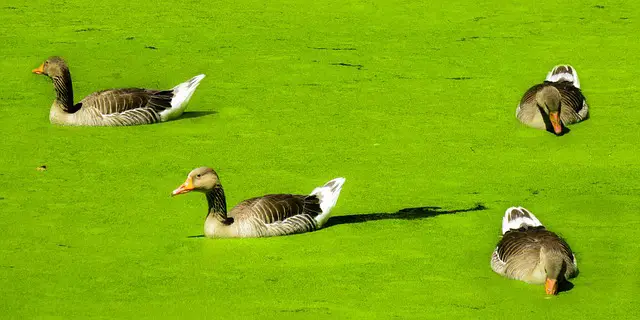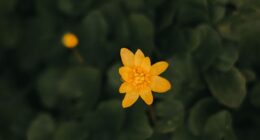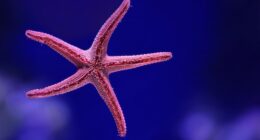Blanket weed and duckweed may look similar at first glance, but they are actually quite different. Blanket weed is a type of algae that spreads quickly and can be difficult to manage in an aquarium or pond while duckweed is a floating plant that can help keep water conditions balanced. Both should be monitored closely and removed if needed.
What is blanketweed?
Blanket weed, also known as pond scum, is a type of algae that often forms a thick mat on the surface of ponds and lakes. Duckweed is a small floating plant that often looks like a green dot on the water’s surface. While both blanket weed and duckweed can be unsightly, they are not harmful to people or animals.
What is duckweed?
(Image by Gerhard from Pixabay )

Duckweed is a small, floating aquatic plant that resembles a tiny piece of green felt. It is often found in ponds, lakes, and slow-moving streams. Duckweed can grow rapidly and can quickly cover the surface of a body of water, which can cause problems for native plants and animals.
The difference between the two
Duckweed is often mistaken for blanket weed but there are some key differences between the two. For one, duckweed is a lot smaller than blanket weed and can often be found in ponds or other small bodies of water. Additionally, duckweed has a root system that helps it anchor to the bottom of a body of water, whereas blanket weed does not have roots and instead gets its nutrients from the water itself. Finally, duckweed reproduces by budding off new plants, whereas blanket weed reproduction involves releasing spores into the water.
How to get rid of blanketweed
Blanket weed, also known as pond scum, is a common problem in ponds and lakes. It can be unsightly and make swimming or fishing difficult. Blanket weed is actually a type of algae, and it thrives in warm, sunny conditions. There are several ways to get rid of blanket weed, including chemical treatments, manual removal, and introducing predators.
Chemical treatments are the most common method of getting rid of blanket weed. There are many products on the market that contain algaecides, which will kill the algae. These products can be applied directly to the water or added to a garden hose for spot treatment. Be sure to follow the directions on the label carefully, as some products can be harmful to fish and other aquatic life.
Manual removal is another option for getting rid of blanket weed. This can be done by raking or pulling the algae out of the water with a net. This method is best done in small areas where the algae is not too dense. It is important to remove all of the algae so that it does not regrow quickly.
Introducing predators is a natural way to get rid of blanket weed. Fish such as koi and goldfish will eatalgae, and they can help keep populations under control. Other predators include snails, crustaceans, and water beetles. Adding these creatures to your pond or lake will help reduce the amount of blanket weed over time.
There are several ways to control blanket weed naturally. The most important thing is to keep the pond or lake clean and free of debris. This will prevent the weed from getting a foothold and spreading. Another good method is to add fish to the waterbody. Fish will eat the blanket weed, keeping it under control. Finally, certain aquatic plants can help to control blanket weed growth.
How to get rid of duckweed
If you have duckweed in your pond, you may be wondering how to get rid of it. Duckweed can be a nuisance because it can quickly take over a pond, crowding out other plants and causing the water to become murky.
One option is to physically remove the plants from the water using a net or your hands. You can also try adding fish to your pond that will eat the duckweed, such as koi or goldfish.
If you have a lot of duckweed, you may need to use chemicals to kill it. There are products available that contain herbicides that will kill duckweed without harming other plants or animals. Be sure to follow the directions on the product label carefully when using any chemicals in your pond.
What does duckweed look like?
Duckweed is a small, floating plant that is often found in ponds and other freshwater habitats. The plant has small, round leaves that are attached to a stem at the base. Duckweed can reproduce rapidly, and a single plant can produce thousands of new plants in a short period of time.
What does blanketweed look like?
Blanket weed, also known as pond scum or algae, is a type of aquatic plant that can grow in freshwater ponds and lakes. It gets its name from the way it grows in mats or blankets that can cover the entire surface of a body of water. Blanket weed can be either floating or rooted in the bottom sediment.
Floating blanket weed typically has long, thin leaves that are green or yellow-green in color. The leaves are attached to a network of small air-filled bubbles that help keep the plant afloat. Rooted blanket weed has shorter, thicker leaves that are dark green or brownish in color. The roots of rooted blanket weed can extend several feet into the sediment at the bottom of a pond or lake.
Both types of blanket weed can reproduce rapidly, especially during the warmer months of the year. They can spread quickly and become nuisance plants that interfere with swimming, fishing, and other activities in freshwater ponds and lakes.
Is duckweed good for ponds?
Yes! Duckweed can be a great addition to any pond, providing many benefits to the ecosystem.
Duckweed is a fast-growing plant that helps to improve water quality by absorbing nutrients and pollutants from the water. It also provides shelter and food for fish, amphibians, and invertebrates. Additionally, duckweed can help to reduce algae growth by shading the water and competing for nutrients.
So, if you are looking to add something to your pond that will benefit the ecosystem, duckweed is a great option!
Why is it called duckweed?
There are a few reasons that duckweed is called duckweed. One reason is because this plant often floats on top of ponds and other bodies of water, much like ducks float on top of water. Another reason is because duckweed usually has a small, round shape, similar to the shape of a duck’s head.
Duckweed is also sometimes called water lens or lens-shaped plant. This is because the leaves of duckweed are often shaped like lenses, which helps them absorb more sunlight for photosynthesis. Duckweed generally grows in warm climates and can be found in many parts of the world.
Why is it called blanketweed?
Blanket weed, also known as pond scum, is a type of algae that can quickly take over a pond or other body of water. It gets its name from its ability to spread quickly and cover the surface of the water like a blanket. Duckweed is also a type of algae, but it is much smaller and does not spread as quickly.
Frequently asked questions about blanketweed and duckweed
What is duckweed used for?
Duckweed is a type of aquatic plant that can be used for various purposes. Some people use it as a form of natural filtration for their ponds or aquariums, while others may use it as a food source for their fish or other animals. Duckweed can also be used as a decorative element in water gardens.
Are there any uses for blanketweed?
Yes, there are several uses for blanket weed. It can be used as a form of biological control for ponds and aquariums, as it will compete with algae for space and resources. It can also be used as an ornamental plant in water gardens. Additionally, some people use blanket weed to make compost or mulch.
Why is duckweed a problem?
Duckweed is a problem because it can quickly cover the surface of a pond, blocking out sunlight and oxygen. This can create problems for fish and other aquatic creatures living in the pond. Duckweed can also make it difficult for people to use the pond for swimming or boating.
What eats duckweed in a pond?
Duckweed is a small, free-floating aquatic plant that is often mistaken for blanket weed. Duckweed is an important food source for waterfowl and other aquatic animals. It can also be used as a biofilter to improve water quality.
Can fish live with blanketweed?
Fish can live with blanket weed, but it is important to keep an eye on the growth of the plant. If it starts to take over the pond, it can create problems for the fish by depleting oxygen levels and causing water quality issues.
Can I eat duckweed?
The answer is yes! Duckweed is a nutritious plant that is high in protein and vitamins A and B. It can be eaten raw or cooked, and is often used as an ingredient in soups and stews.
Do oxygenating plants stop blanketweed?
Oxygenating plants are often used to help control blanket weed as they help to improve water quality and clarity. Oxygenating plants release oxygen into the water which helps to prevent blanket weed from taking hold. Additionally, these plants can also help to reduce the amount of algae in the water which can also lead to healthier pond conditions overall.
What happens when duckweed dies?
When duckweed dies, it typically falls to the bottom of the pond or lake where it decomposes. Duckweed that is floating on the surface of the water can also be eaten by fish or other animals, which helps to keep the water clean.
Featured Image By – Photo by Townsend Walton on Unsplash








